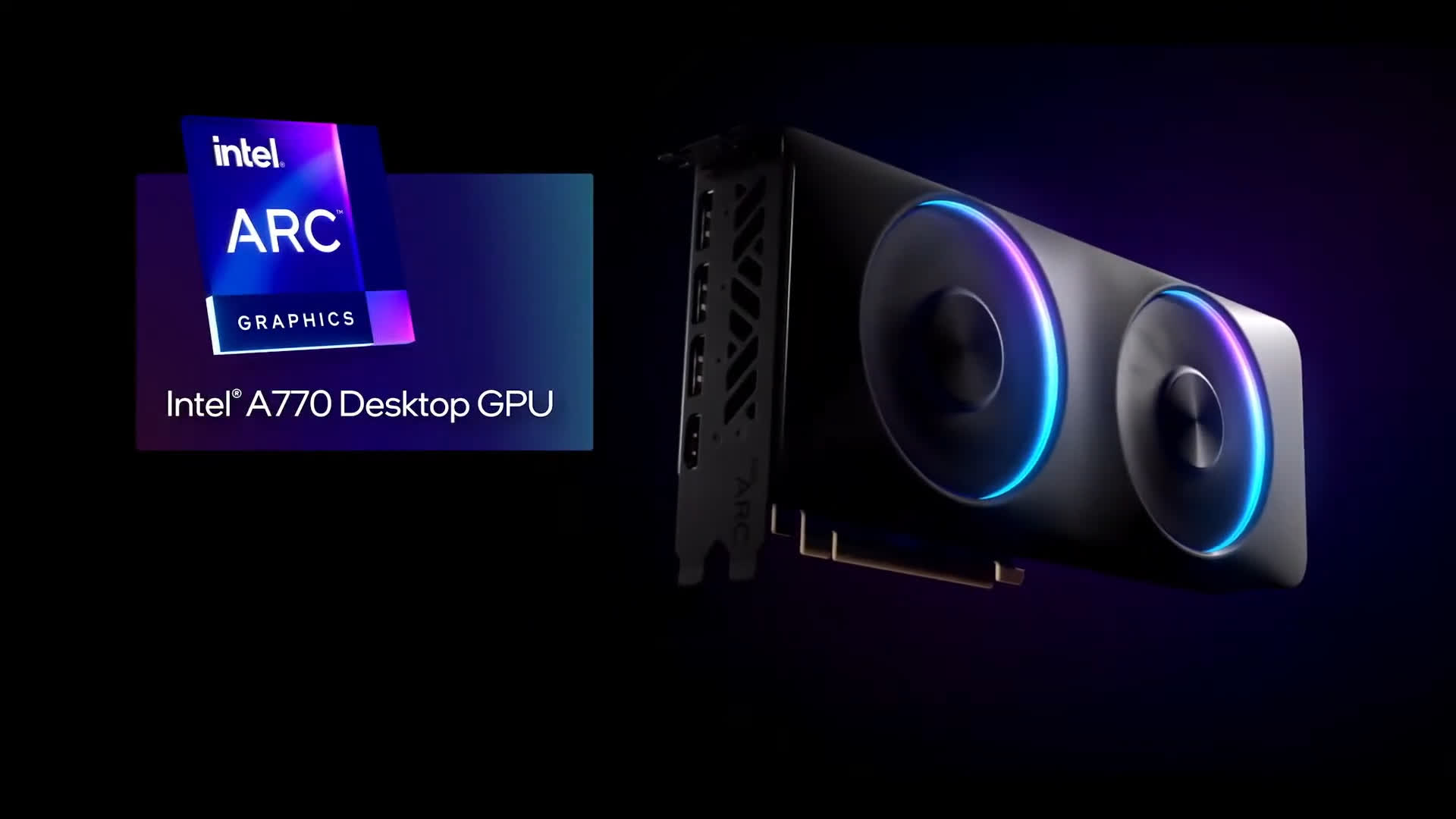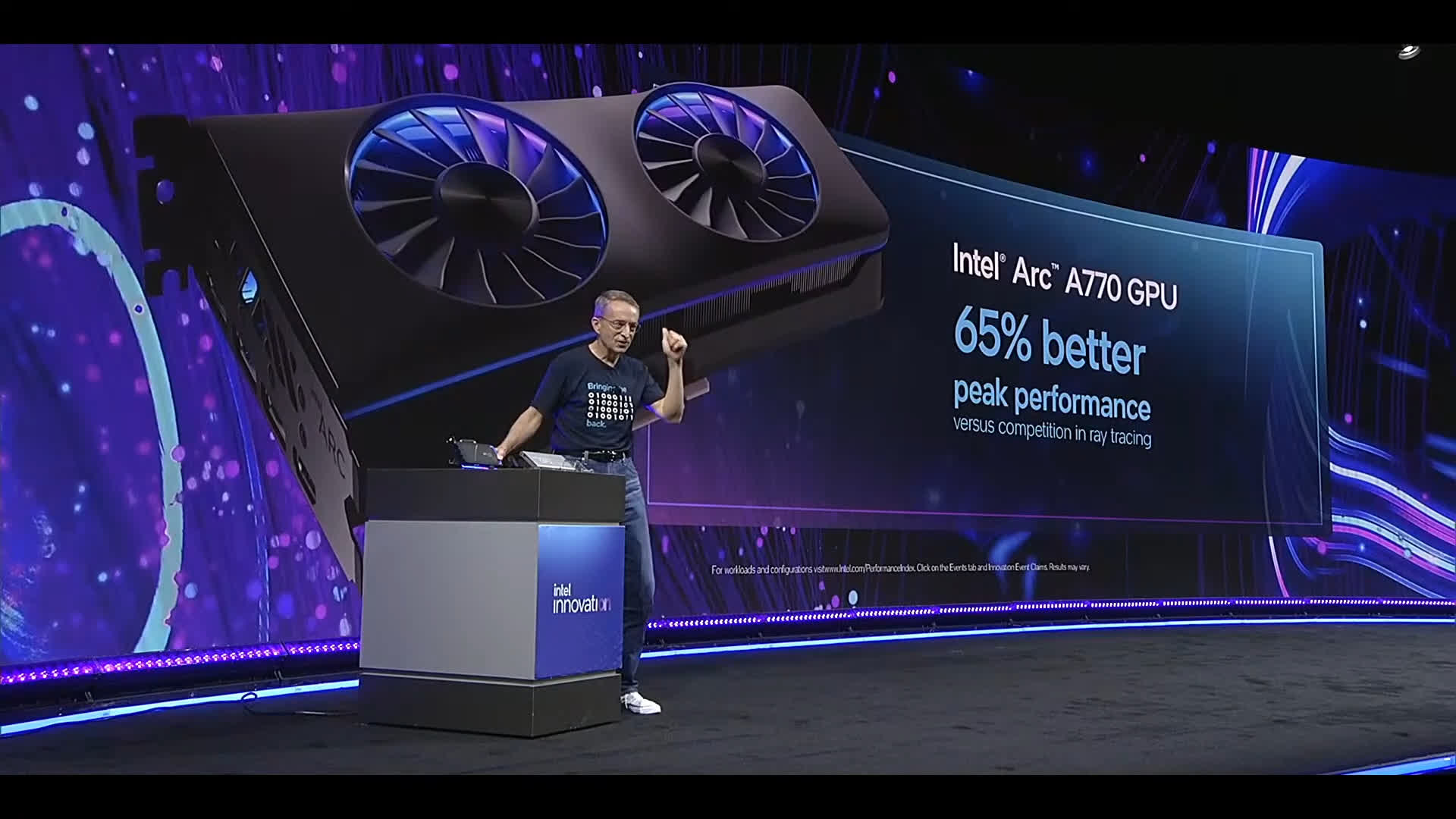Something to look forward to: After recently making the plunge into the discrete GPU market with the Arc A380, Intel has decided to try its hand at the mid-range market. During the Intel Innovation keynote, CEO Pat Gelsinger officially announced the upcoming Arc A770's MSRP and release date.

Intel took the opportunity to announce its upcoming products at its Innovation keynote on Tuesday. Along with its Raptor Lake processors, Pat Gelsinger also revealed Intel's flagship Arc A-Series graphics card, the Intel Arc A770.
The A770 follows up on Intel's Arc A380, which consumers and reviewers panned on release. Driver issues and poor performance in many AAA games plagued the graphics card's launch. Thankfully, Intel's Arc A770 packs a much bigger punch, battling alongside GPUs like Nvidia's RTX 3060 and AMD's RX 6600 XT.

Intel has previously claimed that the Arc A770's raster performance ranked slightly ahead of the RTX 3060, and its specs prove why. The A770 comes equipped with 4,096 shading units, 32 Xe cores, 512 Intel XMX engines, and a 256-bit memory bus supporting a bandwidth of up to 560 GB/s. It is a significant improvement from the A380, a card that sometimes struggled to outperform the RX 6400.
Gelsinger also claims the A770 can perform up to 65% better than the competition in ray-tracing performance. Unfortunately, he didn't cite specific graphics cards and benchmarks for this claim. Intel has previously released videos comparing the A770 to the RTX 3060 in ray-tracing performance in the past, so it is fair to assume that this may be the "competition" Gelsinger mentions.

Gelsinger confirmed that samples of the Arc A770 are on the way to reviewers and companies, which affirms recent rumors of embargoes being lifted in the coming days. He closed the presentation with the official MSRP and release date.
The Arc A770 launches on October 12, starting at $329. It is worth noting that the A770 has two different models, featuring either 8 GB or 16 GB. Expect a minor price bump for the 16 GB model. Thankfully, Intel has not pulled any trickery with having two graphics cards under the same name. Users who opt for the 8 GB model of the Arc A770 will not lose any significant performance, with the only downgrade being a minor drop in the overall memory speed.
https://www.techspot.com/news/96125-intel-arc-a770-officially-releases-october-12-starting.html